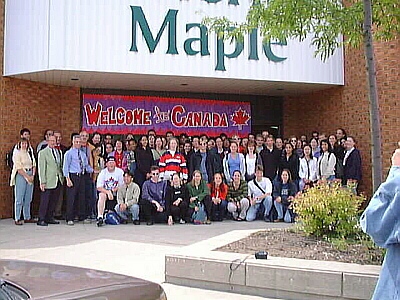

Due to several sponsorships the system has been further developed over the next years and very soon (around 1982/1983) has been introduced at American and European universities for various scientific fields such as mathematics, computer science, physics, economics, and engineering.
Originally Maple has been implimented in the B programming language but very soon developers switched to C. (B is one of the precursors of C.)
LISP intentionally has not been used for implementation because of the following reasons:
In 1984 Watcom Inc. has been chosen to distribute Maple and version 3.3 has been released. Till the end of 1987, Maple 4.0, 4.1, and 4.2 have been published.
In 1988 Waterloo Maple Software has been founded to directly sell the system and develop it further. Maple 4.3, which was completed a year later, ran an twenty different operating systems, incl. Intel 386 PCs. The development team consists of both company employees and external experts from the University of Waterloo, ETH Zürich and Institut National de Recherche en Informatique et en Automatique (INRIA), France.
The first version of Maple V has been released in 1990. Maple V then featured a new GUI, 3D graphics and supported UNIX X Window.
Waterloo Maple Software formed various alliances in the early 1990s to further improve the system. Among others, partners had been Mathsoft Inc. (which produces MathStation and Mathcad) und Visual Numerics, Inc. WMS bought a Californian software company to acquire new technologies in the fields of symbolic mathematics, graphics and animation. Also several computer magazines gave awards to WMS.
Maple V Release 3 was published in March 1994. It featured extremely improved symbolic and numeric algorithms, a simpler to use interface, export of worksheets to LaTeX, a new online help system and an extended programming language. Several months later, WMS began selling MathEdge, a package of mathematical software modules to be integrated into various applications.
The leading Federal German computer magazine c't summarized in an article on computer algebra systems: `Maple is an [GUI] application that is state-of-the-art that offers enough comfort to beginners and performance to advanced users. Especially the version for MS Windows turned out very well.`
In 1995 MathOffice for Microsoft Word 6.0 has been published which as an interface to Maple V Release 3 allowed easy integration of Maple calculations and graphics into Word documents.
Soon therafter, in January 1996, Release 4 has been published - dubbed the `Power Edition`. It features a completely new graphical user interface, improved typesetting in worksheets, as well as redesigned and extended functions.
In November 1997 Waterloo Maple Inc. began selling Maple V Release 5 for Windows. The GUI has been further improved with the introduction of context menues, palettes, spreadsheets, and real-time 3D graphics. New packages have been added - mainly for differential equations. The geom3d package has been reintroduced in R5. Release 5 also features an interface to Matlab 5 as well as arrays of hardware floats. The programming language now features lexical scoping. On February 23, 1998, R5 for UNIX and Macintosh have been published. A Japanese version is available since June 1998.
On April 20, 1998 Waterloo Maple Inc. celebrated its tenth company anniversary. Originally employing five persons, the staff grew up to 75 employees. WMI moves to the Seagram business area of the City of Waterloo in Summer 1998.

Publishing note: This text is largely based on the Web document 'History of Waterloo Maple Inc.' by Waterloo Maple Inc., several pages published by the Symbolic Computation Group as well as an E-mail from Keith Geddes/Symbolic Computation Group on the C vs. LISP issue.
MAPLE HISTORY V1.0 as of December 15, 1998
Author: Alexander F. Walz, alexander.f.walz@t-online.de
Original file location: http://www.math.utsa.edu/mirrors/maple/mplhist.htm